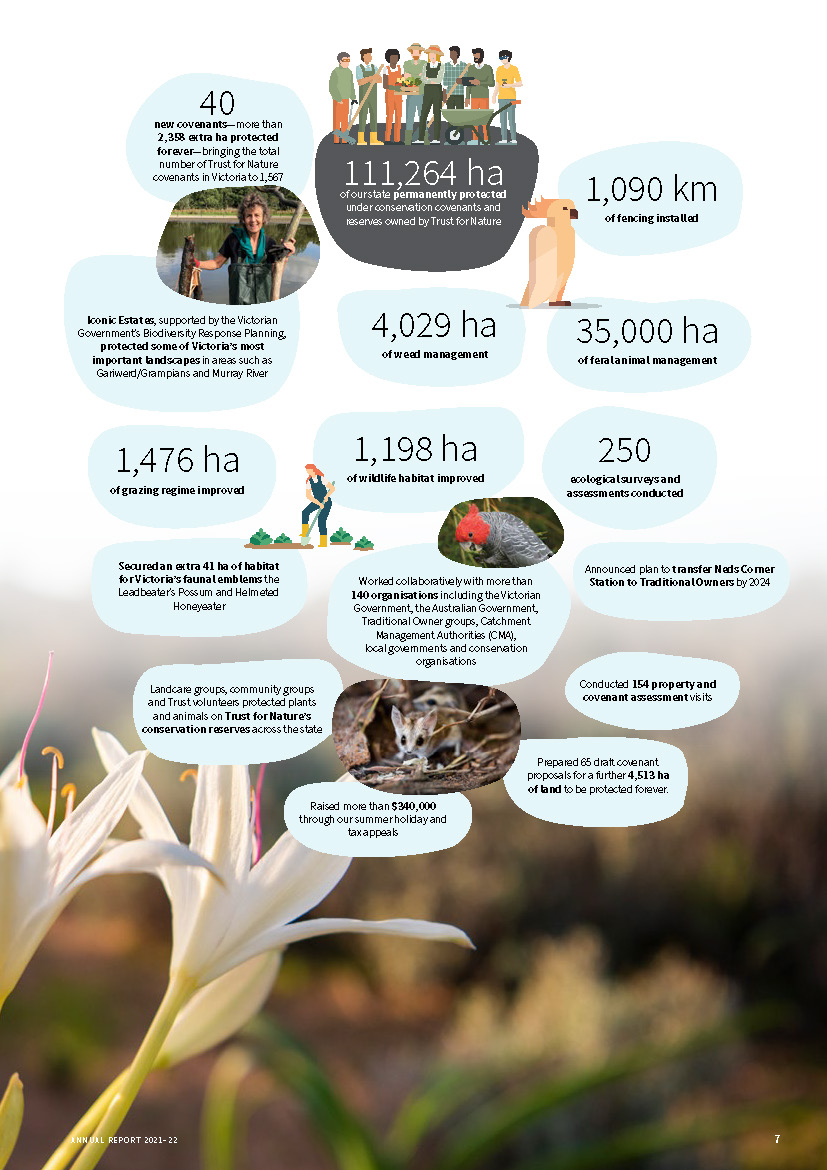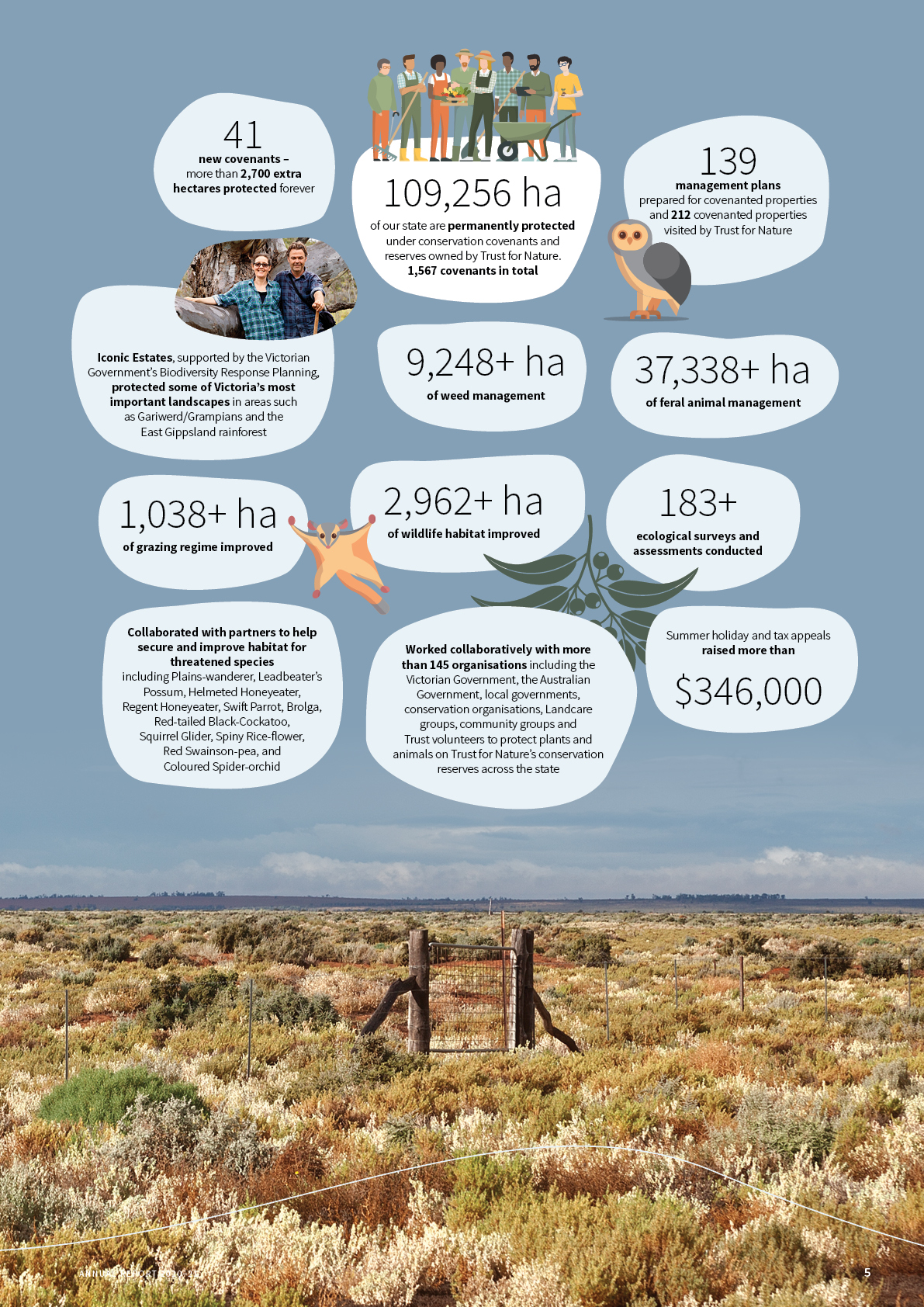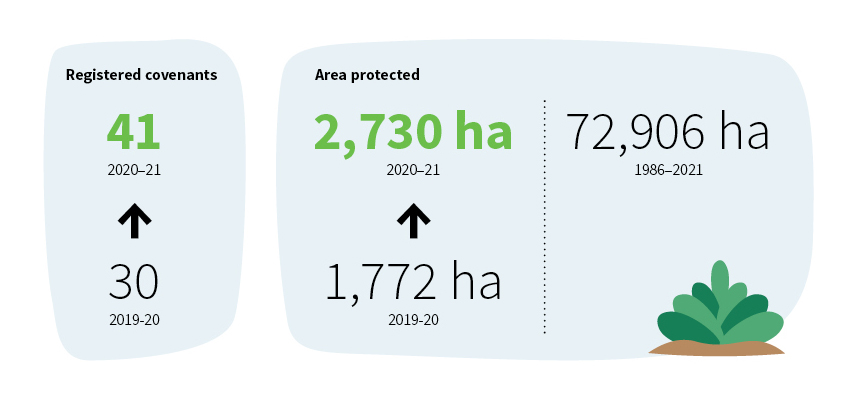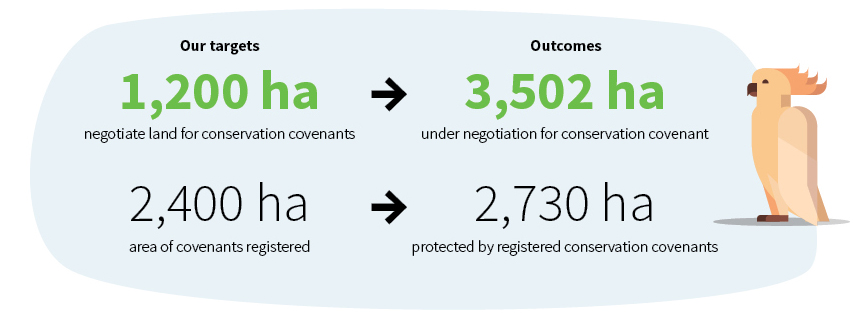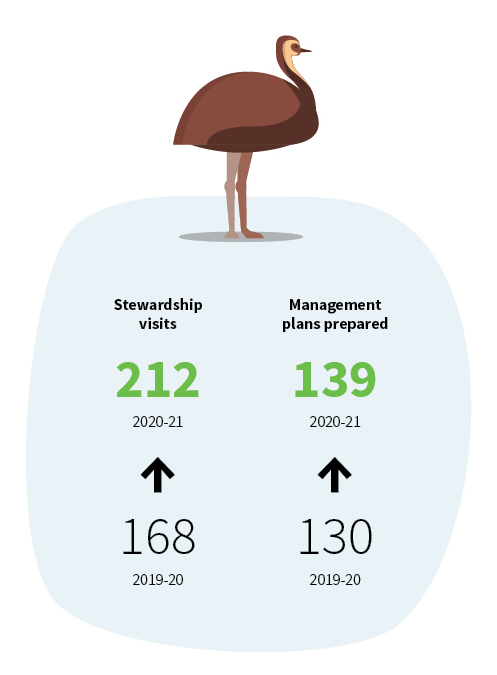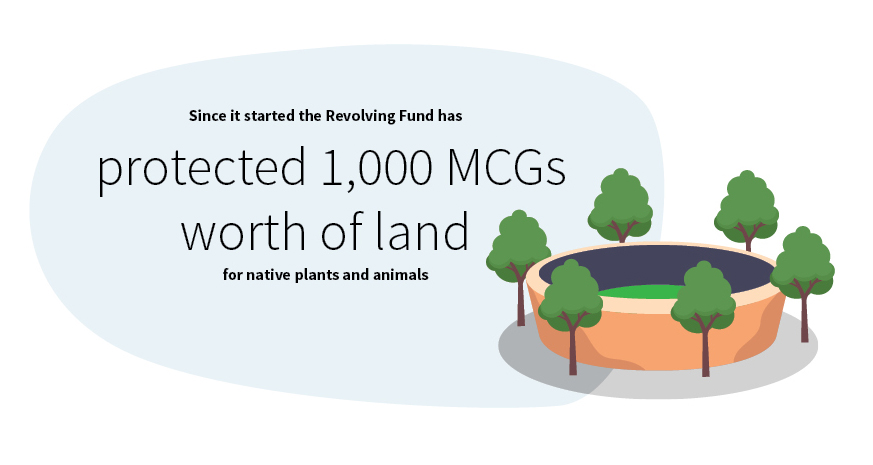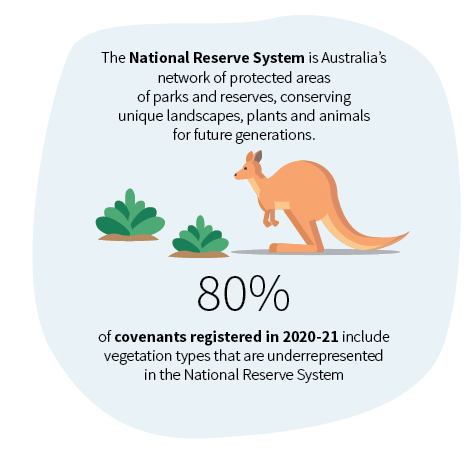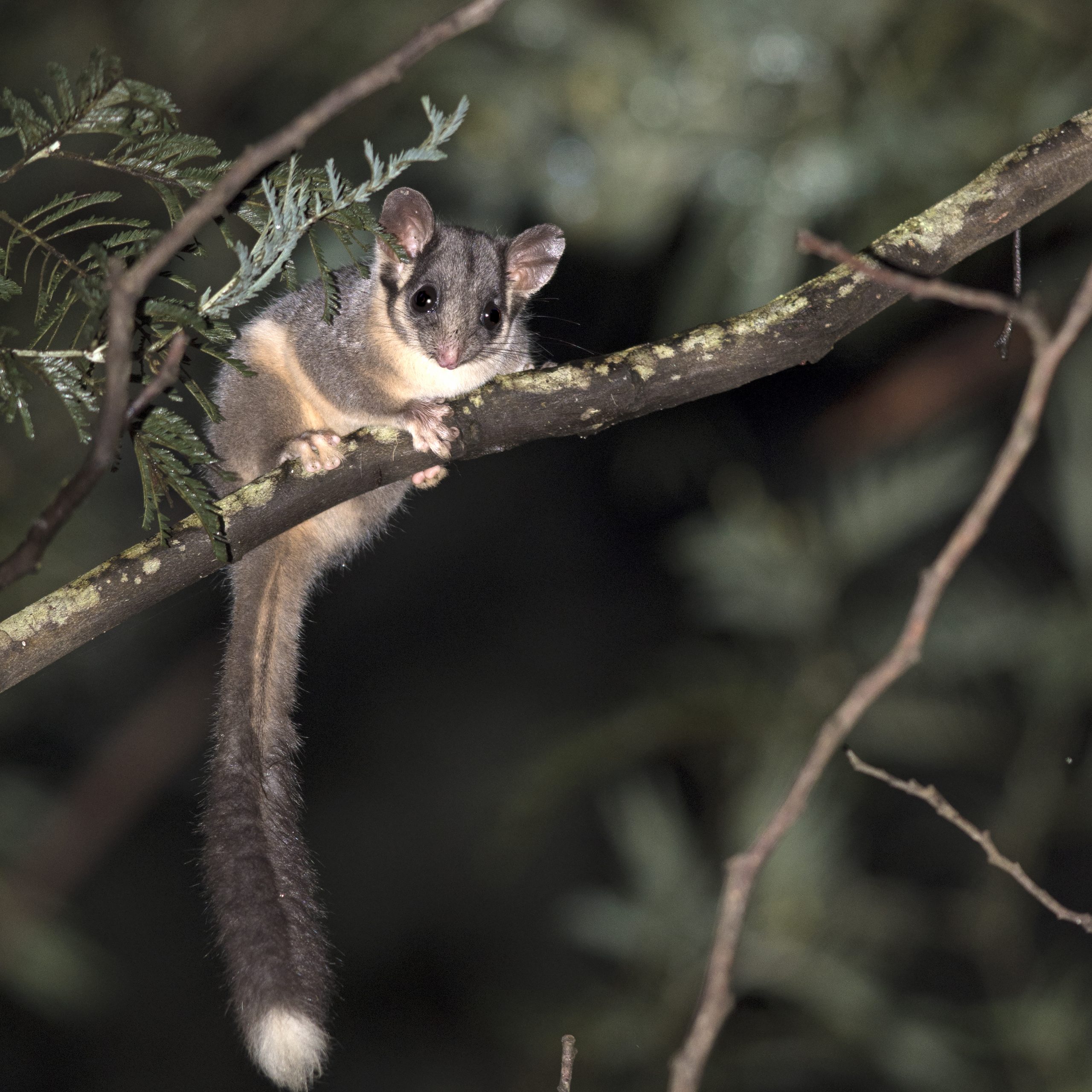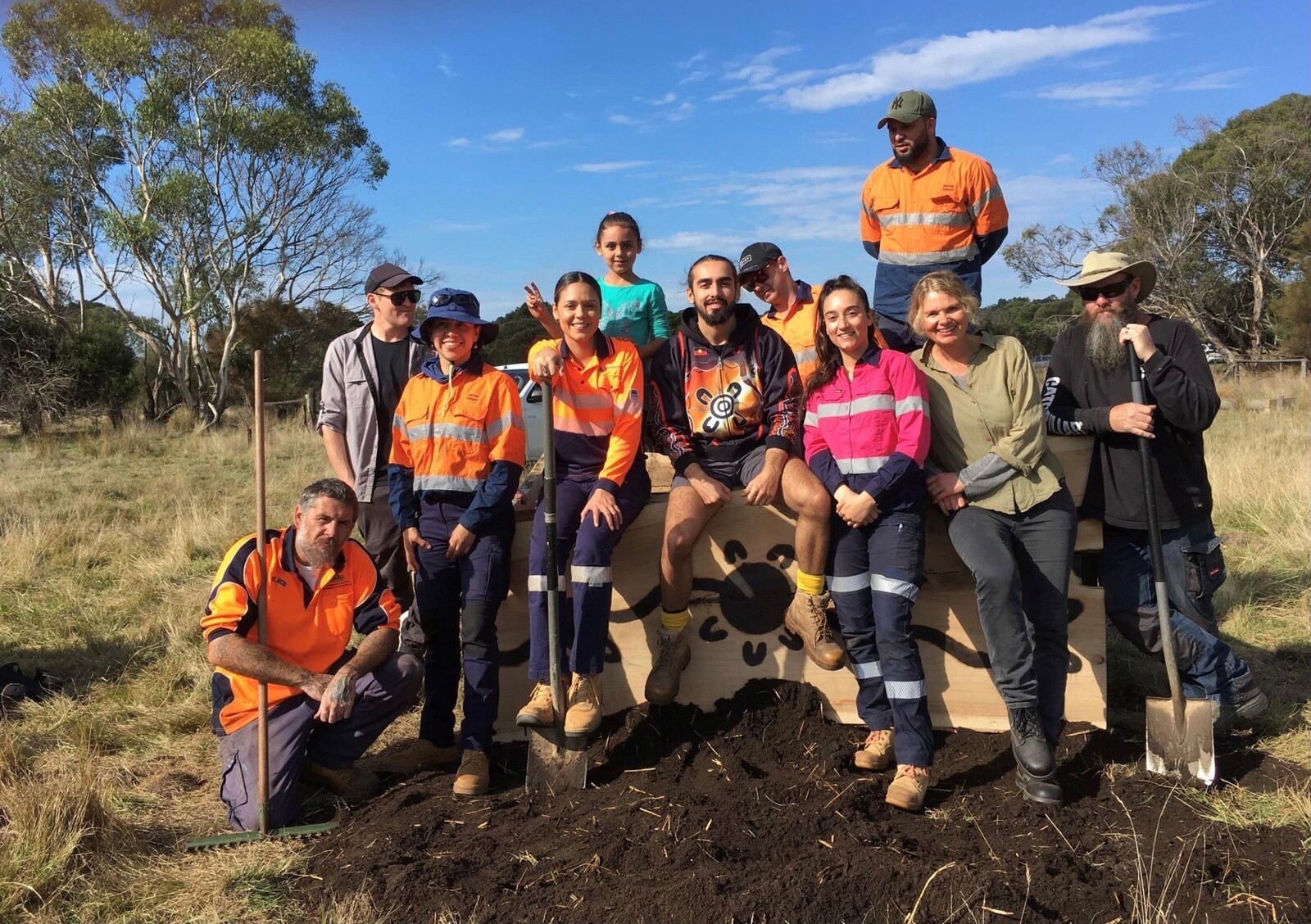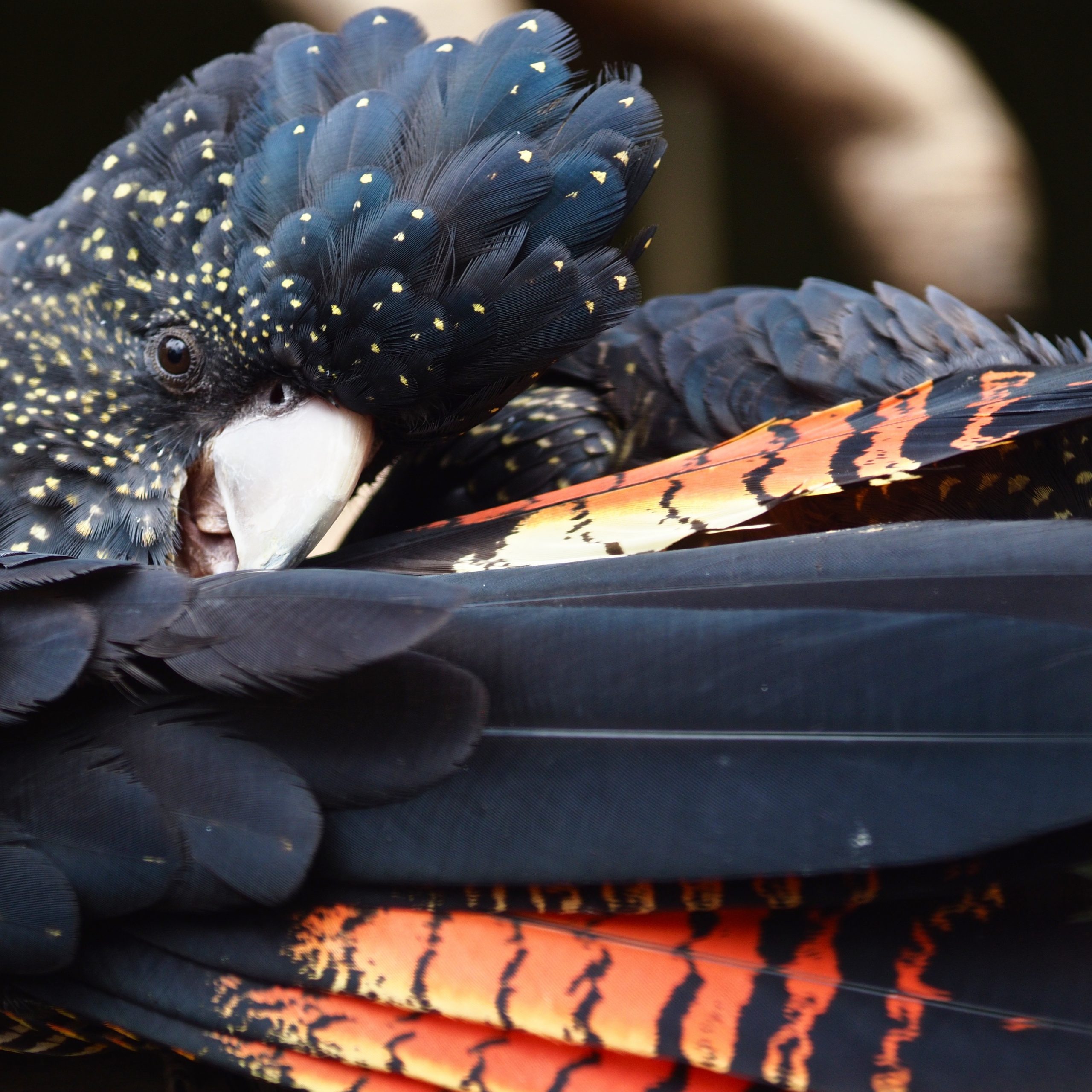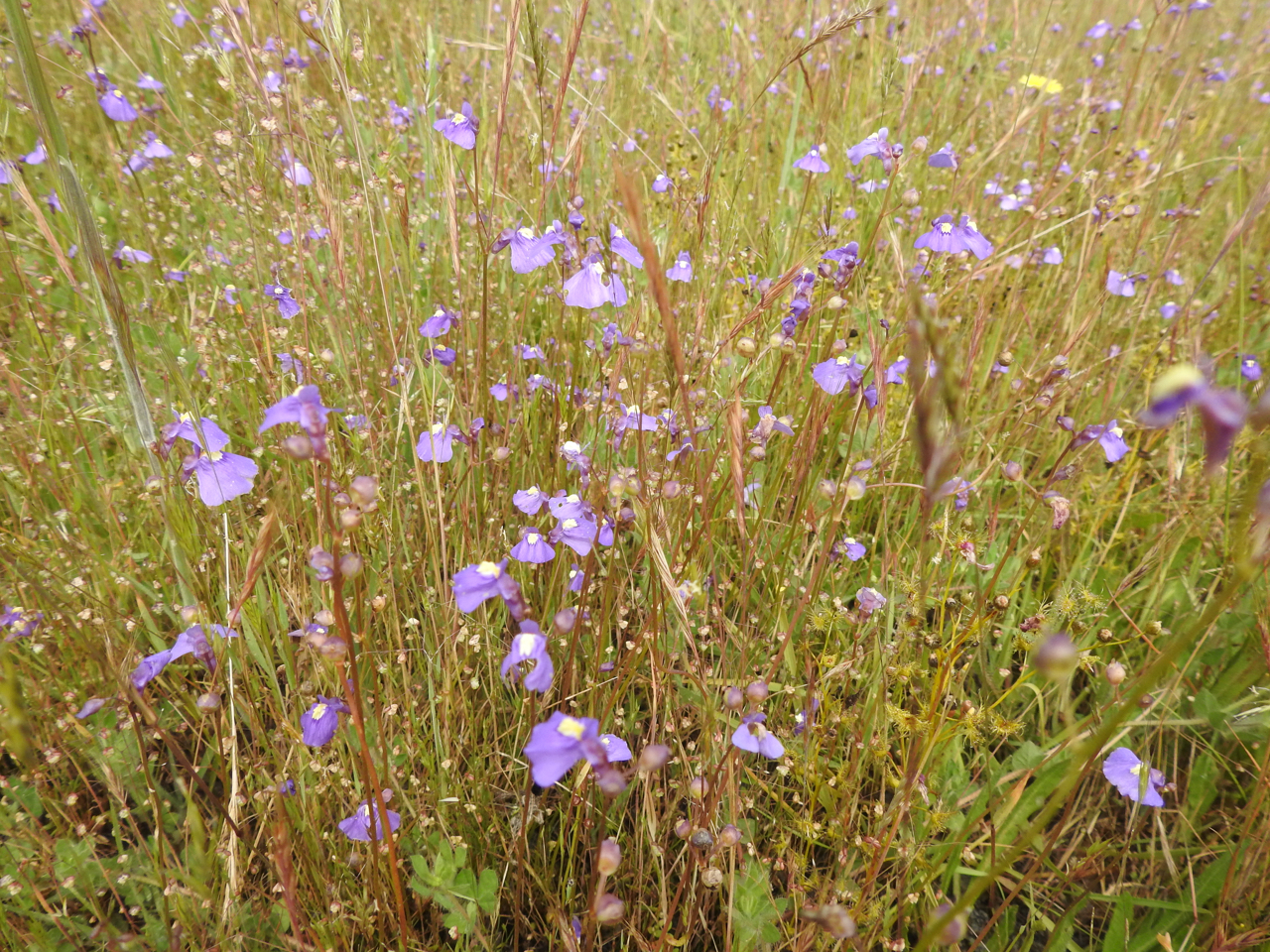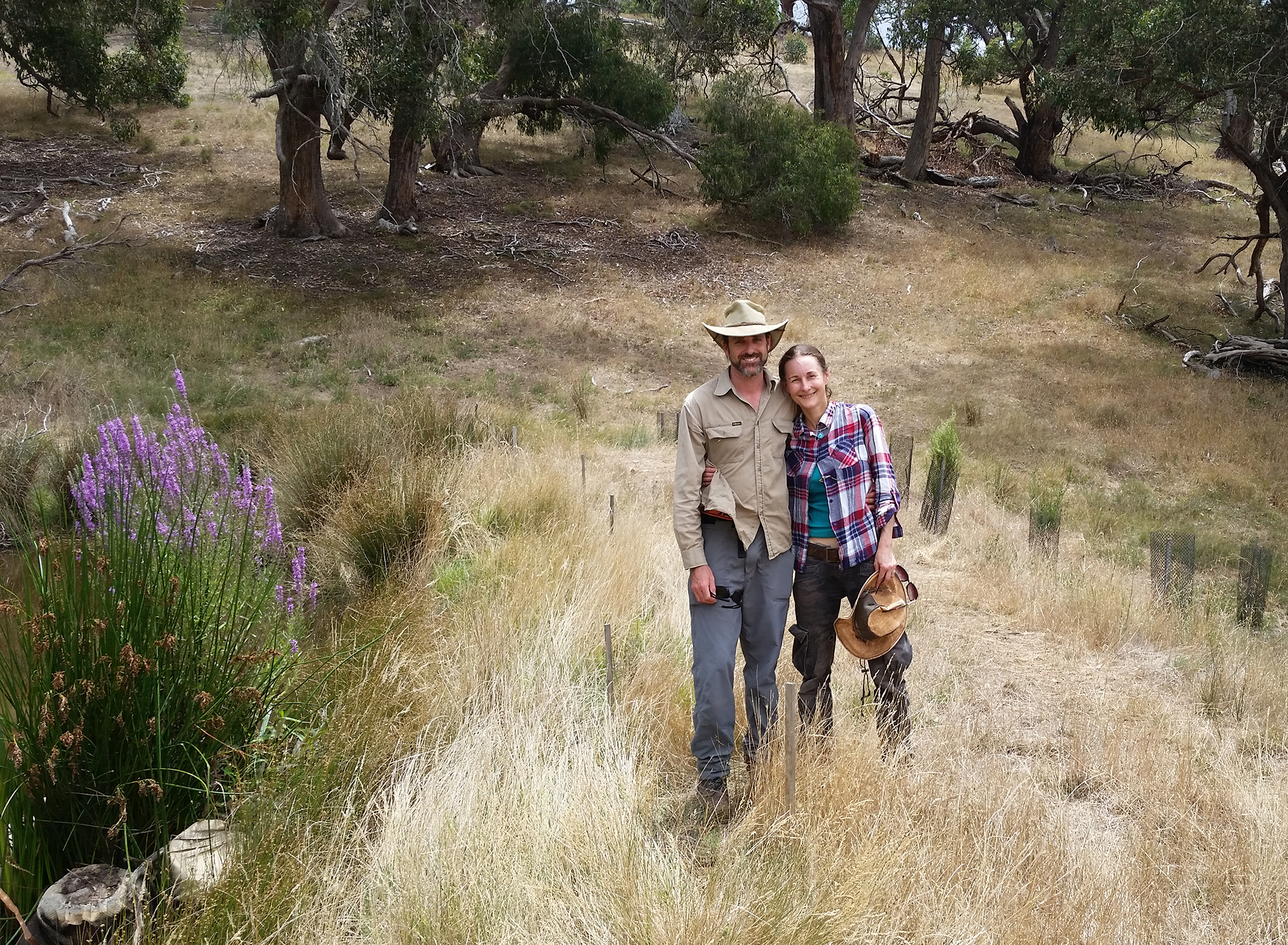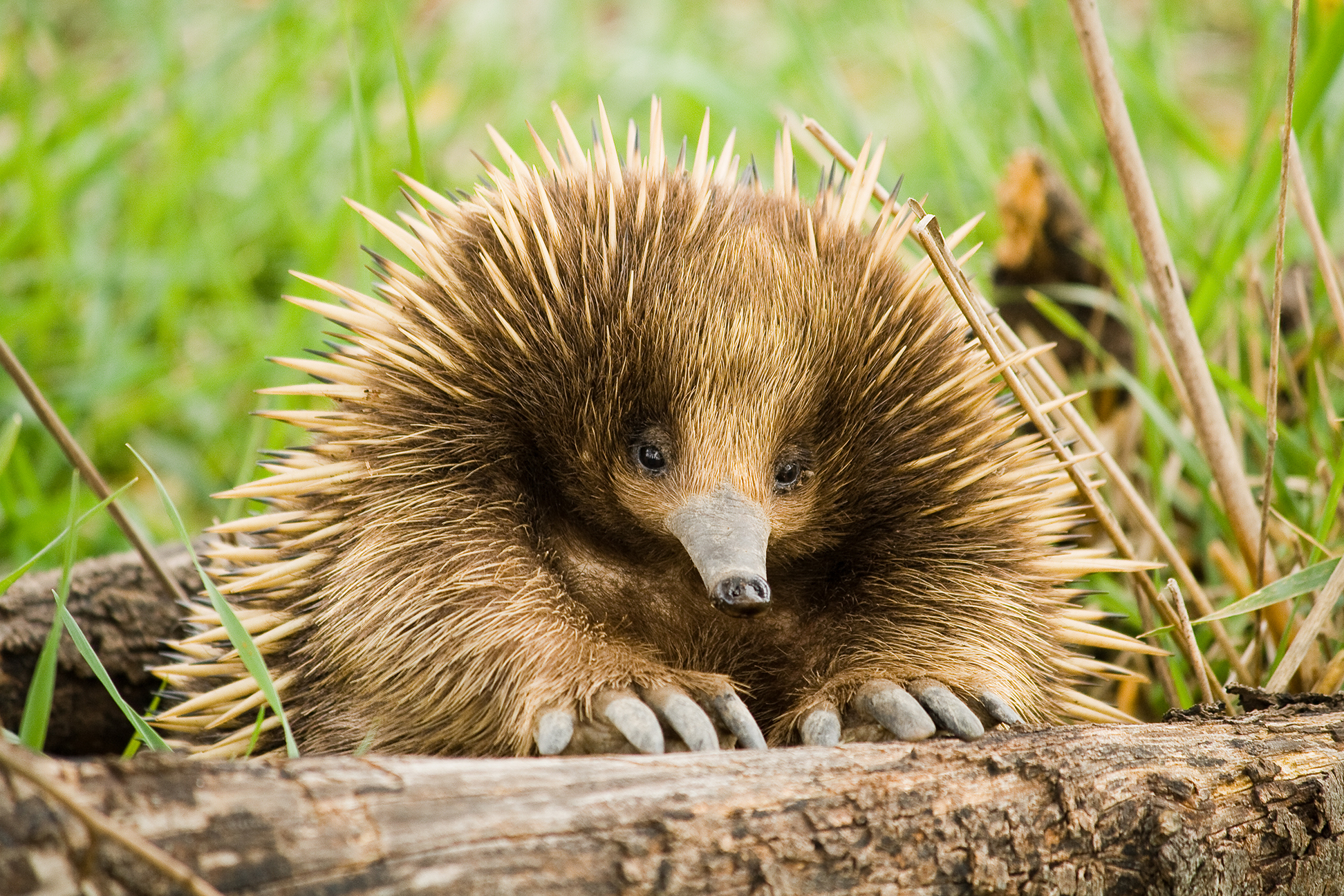Annual report 2021-22
In 2021-22 we continued to deliver on our conservation goals:
→ 40 new covenants registered, protecting more 2,350 ha of habitat for wildlife forever.
→ Including our reserves, we have protected 111,264 ha of Victoria forever.
→ We improved habitat on nearly 1,198 ha, facilitated weed management for more than 4,029 ha, organised feral animal management for more than 35,000 ha.
